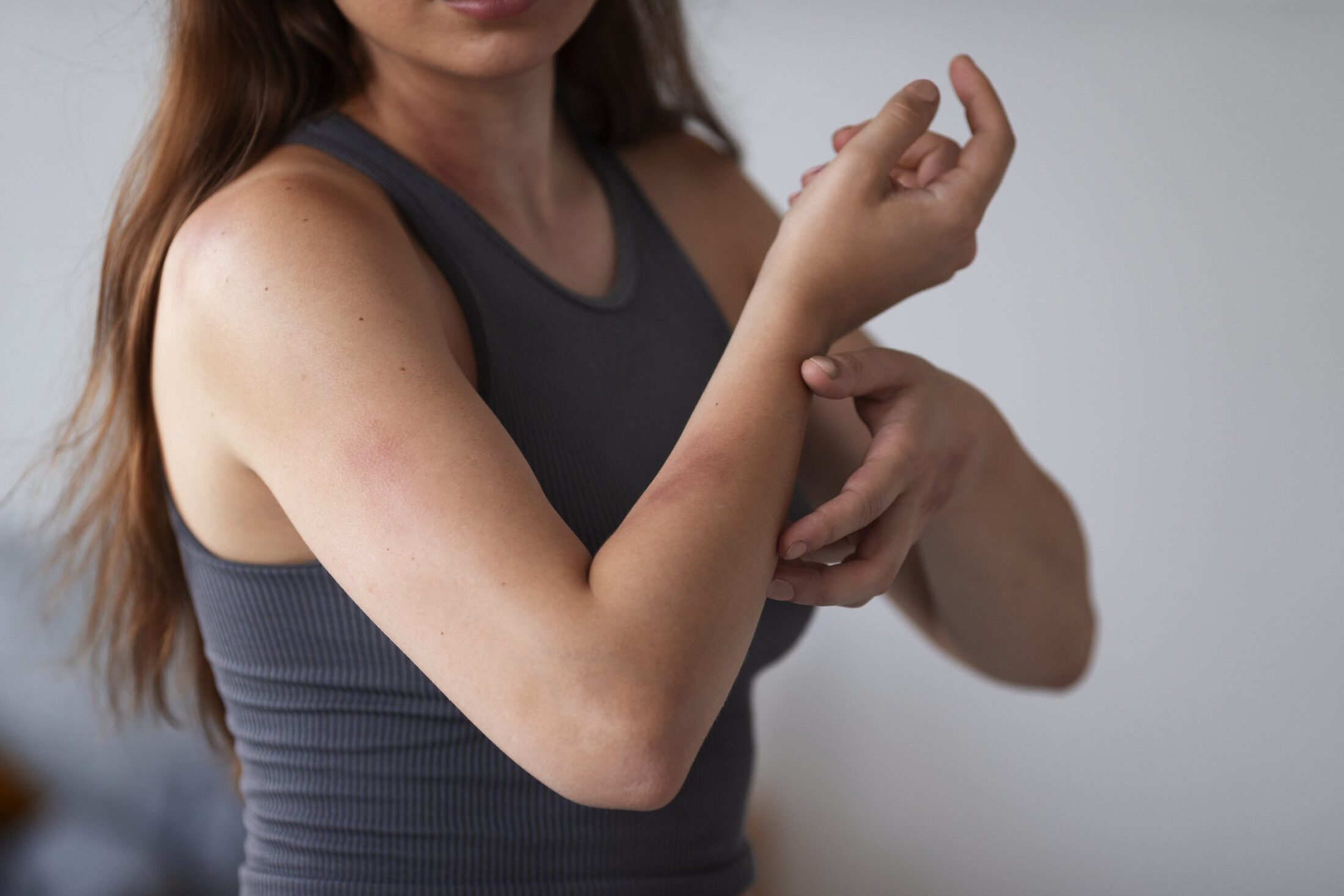Self-Exams Can Save Your Life
Early Detection Starts With You!
In addition to daily sun protection and regular skin checks with our dermatologists, we recommend self skin checks monthly for early detection of skin cancers.
The first thing to look for is anything new or different. Moles or growths that increase in size, change texture or color; spots that itch, hurt or bleed; and sores that don’t heal for more than three weeks might be signals that something is amiss.
When examining existing marks for potential melanoma, the American Academy of Dermatology suggests people look for the ABCDE warning signs.
A is asymmetry – Look for moles whose size, shape, or color vary from one side to the other.
B refers to borders – Be wary of irregular or ill-defined borders.
C signifies color – Particularly varied colors within the same mole or sections that are red, white, gray, or blue might be troublesome.
D stands for diameter – Size does matter when it comes to melanoma, which is why D stands for diameter. Spots that are larger than a pencil eraser are of particular concern and should be checked by a dermatologist.
E refers to evolution. Marks that evolve or change over time may be sending a signal. Most importantly, scan your entire body from head to toes, and use a mirror (or significant other) for hard-to-see places like your back.
How to Perform a Self Exam
For detailed information on how to perform a skin exam, please visit the Skin Cancer Foundation’s detailed Self-Skin Exam instructions.
What to do if you find something suspicious?
If you find something that raises concerns, Dermatology Group of the Carolinas can help. Please click here or call 704-784-5901 to make an appointment with us.




